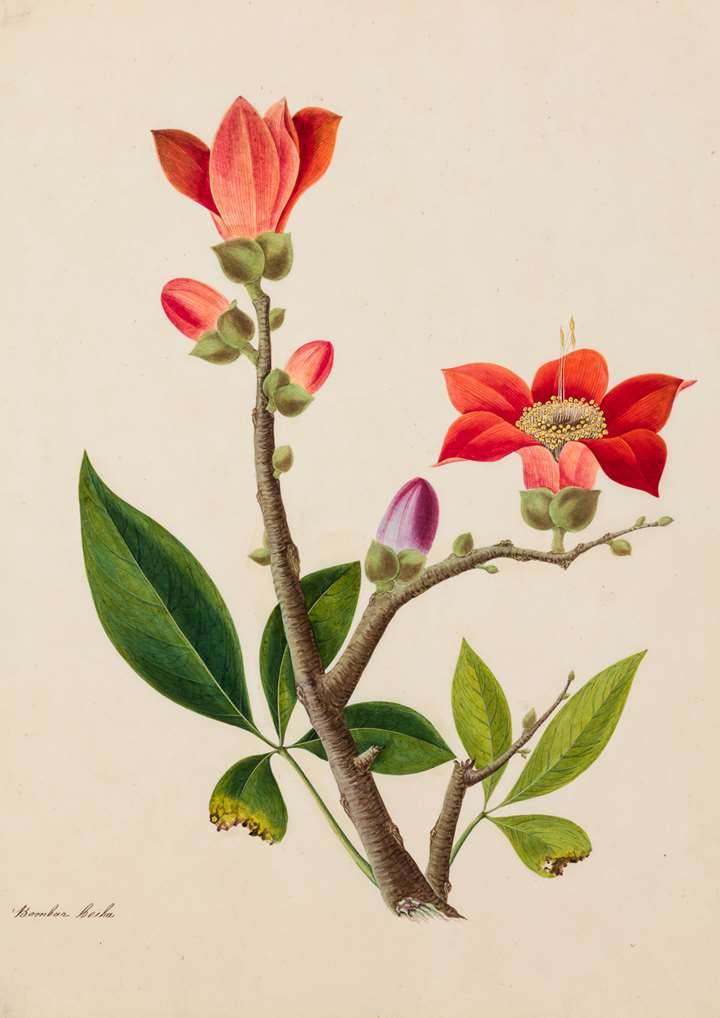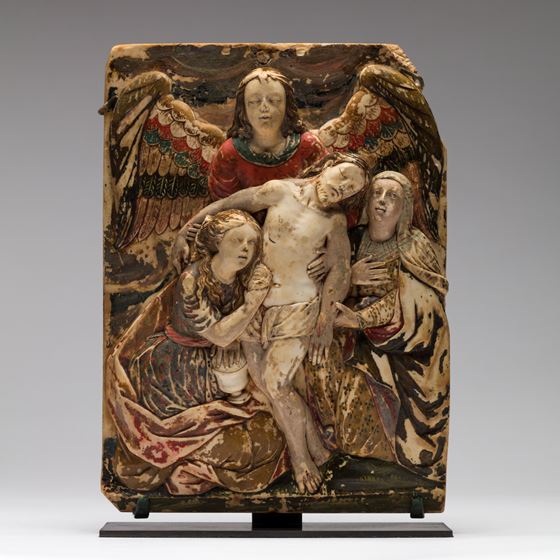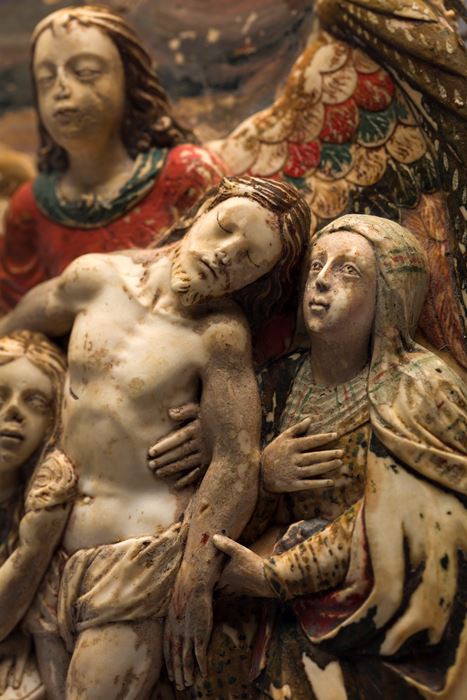Description & Technical information
This delicately carved devotional plaque in alabaster was made by an Andean artist in the Peruvian city of San Juan de la Frontera de Huamanga (known as Ayacucho following independence) in the late 17th century when this area of Upper Peru was part of the Spanish overseas empire under the Viceroyalty of Peru (Virreinato de Peru). It is carved from a local alabaster highly appreciated for its translucency and warmth, commonly known as Huamanga stone (or piedra de Huamanga in Spanish) from the area where the material is quarried.1 The stone, a soft material which can be carved with chisels, knives and files, was first called berenguela by the Spanish, and used by local craftsmen for making utilitarian objects such as mortars and bowls. In the local Quechua language, guamanga means “soft stone”. The first colonial quarries were established in 1586, the stone being used by indigenous sculptors for carving architectural elements for buildings, which included local pre-colonial images (pumas, serpents and other Andean motifs). Starting from the early 17th century, the prized material was used by indigenous, criollo and mestizo craftsmen for carving Christian images under the patronage of the missionary orders and following carving techniques introduced by Spanish masters from Navarre and Aragon. According to the Spanish Jesuit missionary Bernabé Cobo (1580-1657) in his Historia del Nuevo Mundo (1653), ‘in the Diocese of Guamanga, there is a large hill full of veins of very fine alabaster, white as snow, from which small, very curious images are carved and valued by whoever carries them; and this stone is so soft that, soaked in water, they carve it with a knife.’2
The present plaque depicts The Lamentation, with the dead Christ supported by an angel with outstretched wings above and St Mary Magdalene and the Virgin on either side. The superior quality of the carving and the largely intact original polychromy (with traces of gilding), which includes the locally produced multicoloured feathers of the angel’s wings, contrasts with other known examples of this Peruvian workshop. These are usually less compact and present areas of undercutting not seen in this Lamentation. This might be accounted for by its somewhat earlier date as most of the surviving Huamanga devotional carved plaques are dated to the 18th and 19th centuries. Its carving style is reminiscent of earlier mid-16th century Spanish works, such as devotional painted reliefs made in terracotta by Mannerist artists such as Juan de Juni, a French sculptor settled in Castile; a Lamentation attributed to Juni’s workshop is held in the Victoria and Albert Museum, London (accession no. 91-1864).
The vertical arrangement of the composition is rare when compared with the usual 16th and 17th century depictions of The Lamentation with the lying or seated dead Christ. Its composition seems to derive from a Lamentation by the Venetian painter Jacopo Palma il Giovane (1544-1628), painted around 1620 and now in the National Gallery of Art, Washington (accession no. 1991.19.1). Moreover, the more vertical position of Christ’s dead body is similar to that of the present carving, but also its position in relation to the figures of Mary Magdalene and the Virgin are identical. Yet, on the carving, the three figures are brought closer together, whereas the figures on the top register are substituted by that of the angel in the carving. Drawings of the same theme by the same painter survive, while one depicting Christ almost upright being carried by angels is in the British Museum, London (accession no. 1862,0809.32). Nonetheless, the posture of Christ more closely matches that of an engraving by Cherubino Alberti (1653-1615), known as Borghegiano, depicting an angel standing on a cloud supporting the dead Christ, dated ca. 1570-1615; a copy of this is in the British Museum (accession no. 1874,0808.490). The anonymous Peruvian artist likely based his dead Christ supported by an angel on Alberti’s print, choosing to include the two female figures and extending the angel’s wings to accommodate the wider scene. The figures of Mary Magdalene and the Virgin may have been borrowed from Palma il Giovane considering the similarities, although their attire and the presence of attributes (the ointment vase of the Magdalene) are not seen on Palma’s painting, and may thus point to another, probably earlier unknown visual source.
One of the largest assemblages of Huamanga stone carvings is in the collection of the Museo Pedro de Osma, Barranco (Peru). It includes sculptures carved in the round and high reliefs, sometimes with pierced, openwork areas, and devotional plaques of varying sizes, such as the present example. A carved alabaster panel (4.0 x 21.5 x 15.5 cm) similarly made in Peru ca. 1675-1700 depicting Santa Rosa de Lima kneeling before Christ, the Virgin and St Joseph, is in the Victoria and Albert Museum (accession no. 8365-1863).3 A later plaque from around 1780-1800 depicting a Pietà, is in the Museo de Artes of the University of the Andes, Santiago de Chile.
n.b. accession nos are clickable links.
1 On Huamanga stone carvings, see Natalia Majluf, Luis Eduardo Wuffarden. La piedra de Huamanga. Lo sagrado y lo profano (exh. cat.) Lima: Museo de Arte, 1998.
2 Cf. Cobo, Bernabé. Obras del P. Bernabé Cobo. Madrid: Atlas, 1964. p. 123: ‘En la diócesis de Guamanga hay un gran cerro lleno de vetas de finísimo alabastro, blanco como la nieve, de que se labran imágenes de bulto pequeñas, muy curiosas y estimadas doquiera que las llevan; y es tan blanda esta piedra, que remojada en agua la labran con un cuchillo.’
3 Trusted, Marjorie. Spanish Sculpture. Catalogue of the Post-Medieval Spanish Sculpture in Wood, Terracotta, Alabaster, Marble, Stone, Lead and Jet in the Victoria and Albert Museum. London: Victoria & Albert Museum, 1996. pp. 127-128, cat. 59.
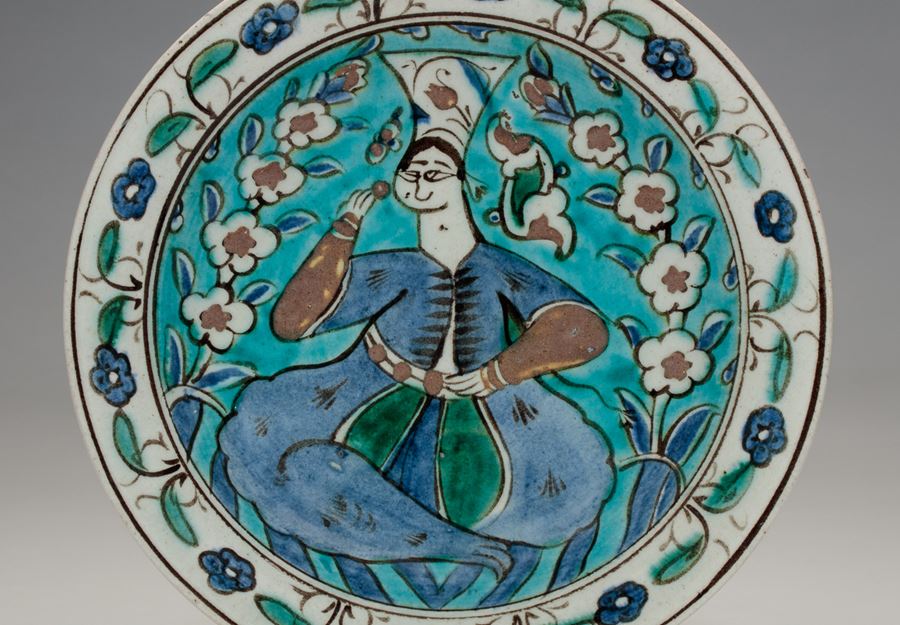
Discover the gallery
Amir Mohtashemi Ltd.
Indian,Islamic and Cross-Cultural Works of Art
More Works From This Gallery
_T638446318994385662.jpg?width=720&height=1200&mode=max&quality=60)
Amir Mohtashemi Ltd.
A Study of a Chinese hwamei or Melodious Laughingthrush (Garrulax canorus)
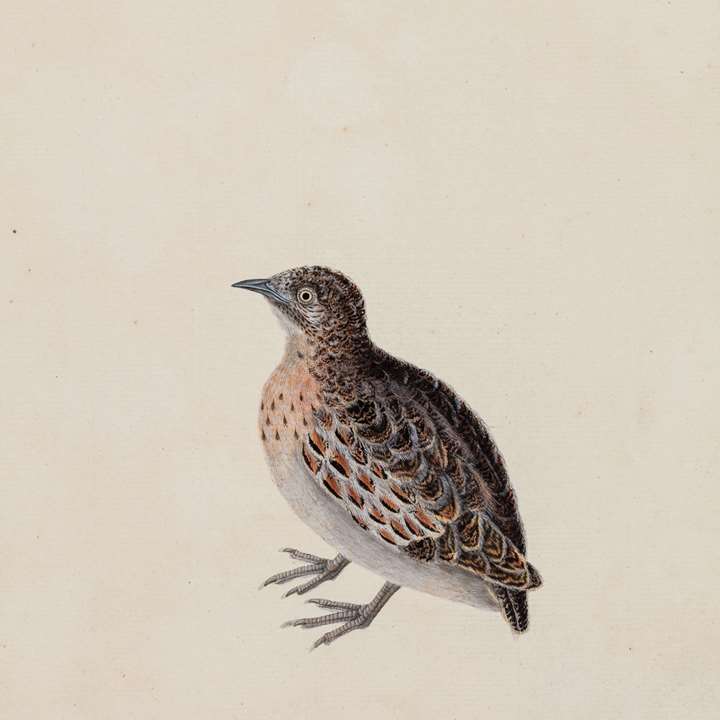
Amir Mohtashemi Ltd.
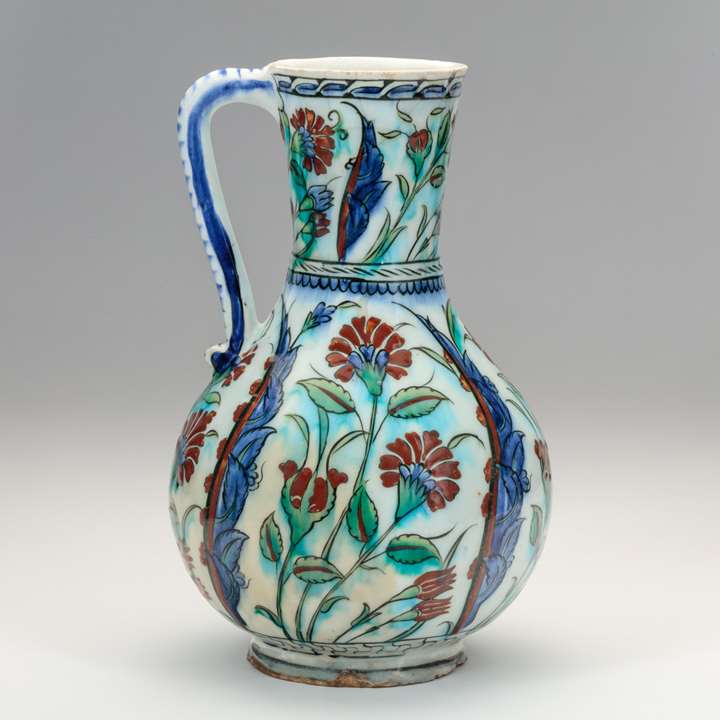
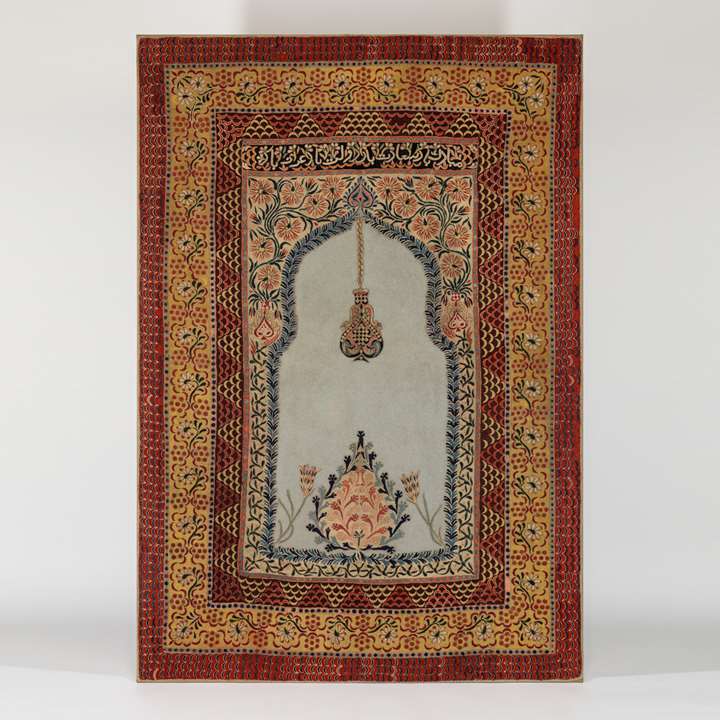
 Flower (Large)_T638206163546965508.JPG?width=720&height=1200&mode=max&quality=60)
